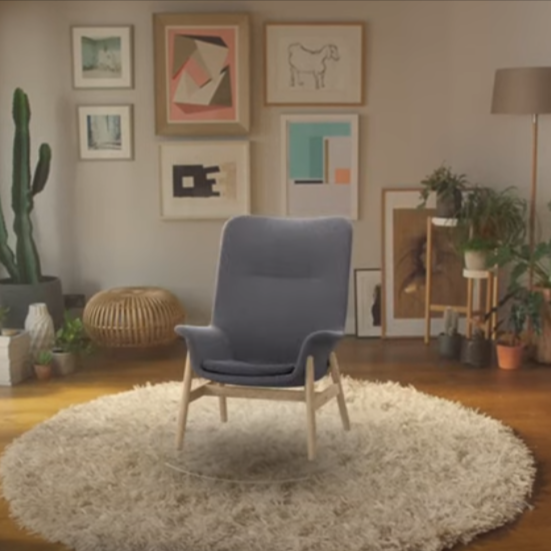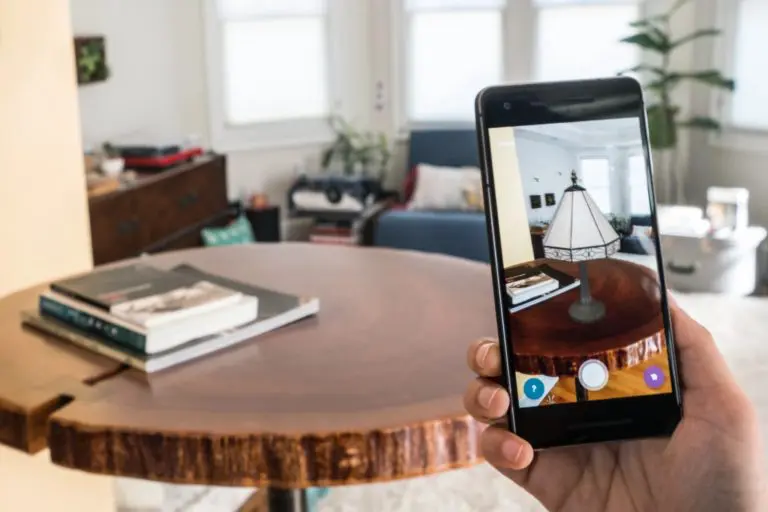Imagine a world where you can see virtual objects superimposed onto real life. Imagine interacting with them and experiencing a whole new level of immersion. That's the power of Augmented Reality (AR). A cutting-edge technology that’s rapidly transforming the way we perceive and interact with our surroundings.
But does AR have a role to play in the world of eCommerce? In short, yes, it does. Several brands are already leveraging the possibilities it brings to take customer engagement to a whole new level. In this article, we’ll explain everything you need to know about AR and how we can help introduce it to your eCommerce brand.
The ins and outs of augmented reality.
Let’s start with the basics - what is augmented reality? AR is a technology that blends digital content with the physical world, overlaying computer-generated graphics, videos, or audio onto the user's real-world environment in real-time. Unlike Virtual Reality (VR), which immerses users into a completely virtual environment, AR enhances the user's perception of the real world by adding a layer of virtual content on top.
AR can be experienced through various devices, such as smartphones, tablets, smart glasses, and headsets. These devices use sensors, cameras, and software to detect the user's environment before positioning virtual objects accordingly to create an interactive and immersive experience.
One of the key features of AR that makes it so engaging when used effectively in the world of eCommerce is its interactivity. Users can mirror a real-life experience by interacting with virtual objects to manipulate them, and even trigger actions or animations. For example, you can play a virtual game on your coffee table, try on virtual clothes to see how they fit, or follow step-by-step instructions for assembling furniture.
Augmented reality by numbers.
AR has the potential to revolutionize numerous industries, including gaming, entertainment, retail, healthcare, education, and more. But how popular is it already? According to Gartner, an estimated 100 million consumers used AR to shop in 2020, with its popularity enhanced due to rolling global lockdowns that prevented people from visiting shops.
Plus, 80 percent of shoppers are highlighting just how important the shopping experience has become to them. Equal importance is now being placed by many on both the shopping experience and the product itself. In addition, an impressive 69 percent of customers are willing to pay extra for value-added services that can enhance their overall user experience.
Alongside this, nearly half of those businesses surveyed by McKinsey & Company expressed interest in using "metaverse" technology, such as AR and VR, for their shopping needs within the next five years.
The number of us with mobile AR active devices has risen dramatically, from 0.44 billion in 2019 to 1.4 billion in 2023 and it’s expected to rise further to 1.73 billion in 2024. That’s a huge potential marketplace. The question is no longer whether augmented reality apps can play a role in your eCommerce business, but when it will be.
how brands are using augmented reality.
AR is transforming the way consumers shop online. With AR, users can virtually try on clothes, accessories, or makeup before making a purchase, allowing them to see how the products look without physically trying them on. This helps reduce returns and improve customer satisfaction. AR is also being used in virtual showrooms, where users can visualize how furniture or home decor will look in their own space before making a purchase decision.
One of the most popular tools for using AR is Snapchat. While this may have lost some of its buzz to TikTok, it is still being used by big name brands like Nike. Nike enable users to customize and virtually try on a pair of Nike Air Force 1s with a digital 360-degree overlay so users can see how they would look on their feet in real life. Of course, if they look good, there’s a Shop Now button to buy the shoes with ease.

The likes of IKEA, Apple, DFS and Amazon have also embraced the possibilities of using AR to preview a purchase in the real world. IKEA Place allows you to use your phone to see exactly how a piece of furniture would look in your home without even needing to leave it to visit a real shop.

From seeing how furniture would look in your room to how clothes would look on you in person to visiting a virtual showroom like Jaguar’s AR Car Showroom, AR is creating new eCommerce opportunities. Using AR, you can give your customers a memorable experience without even having to leave their living room. Even better, they’re already browsing on their device to take immediate purchasing action if they want to buy something.